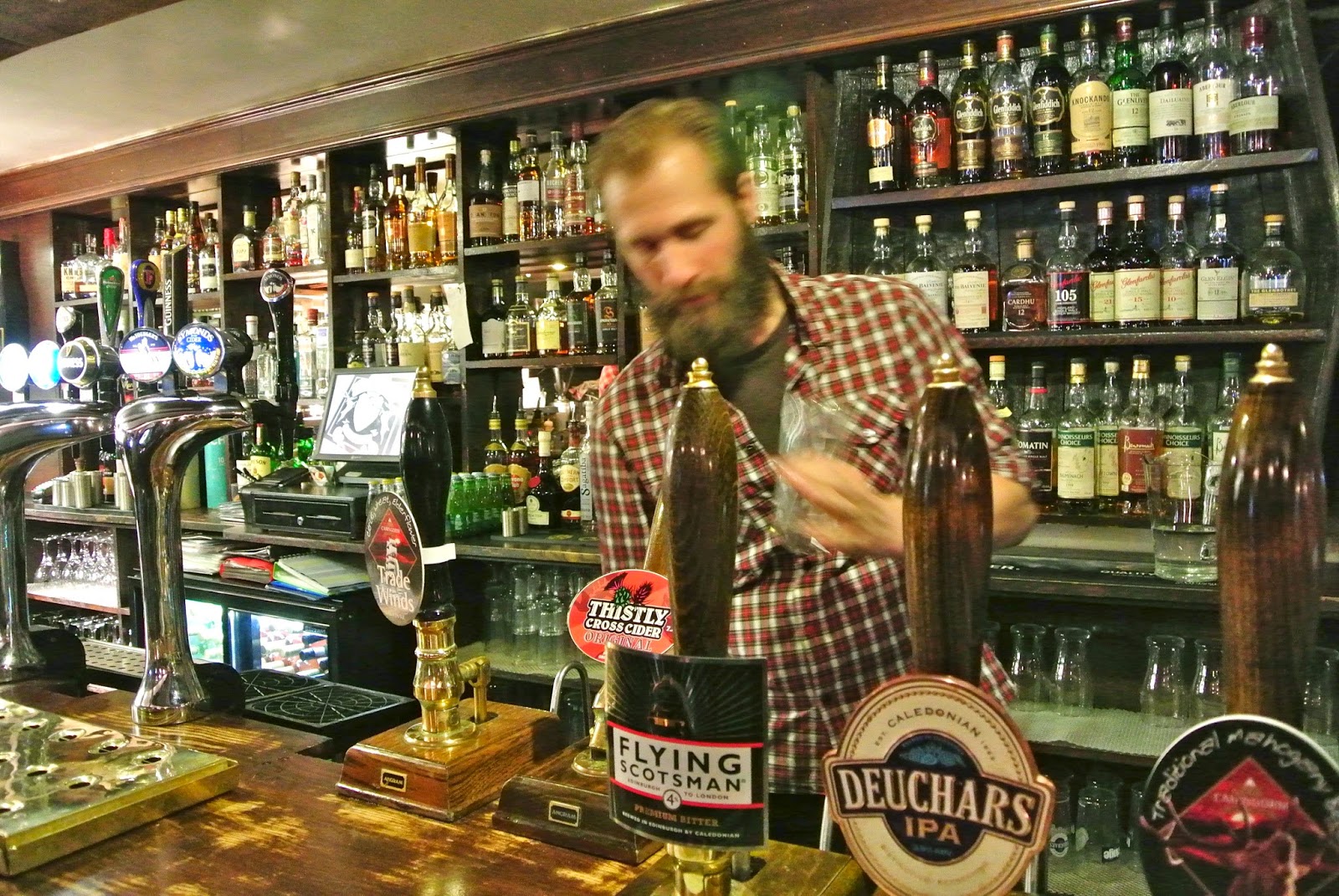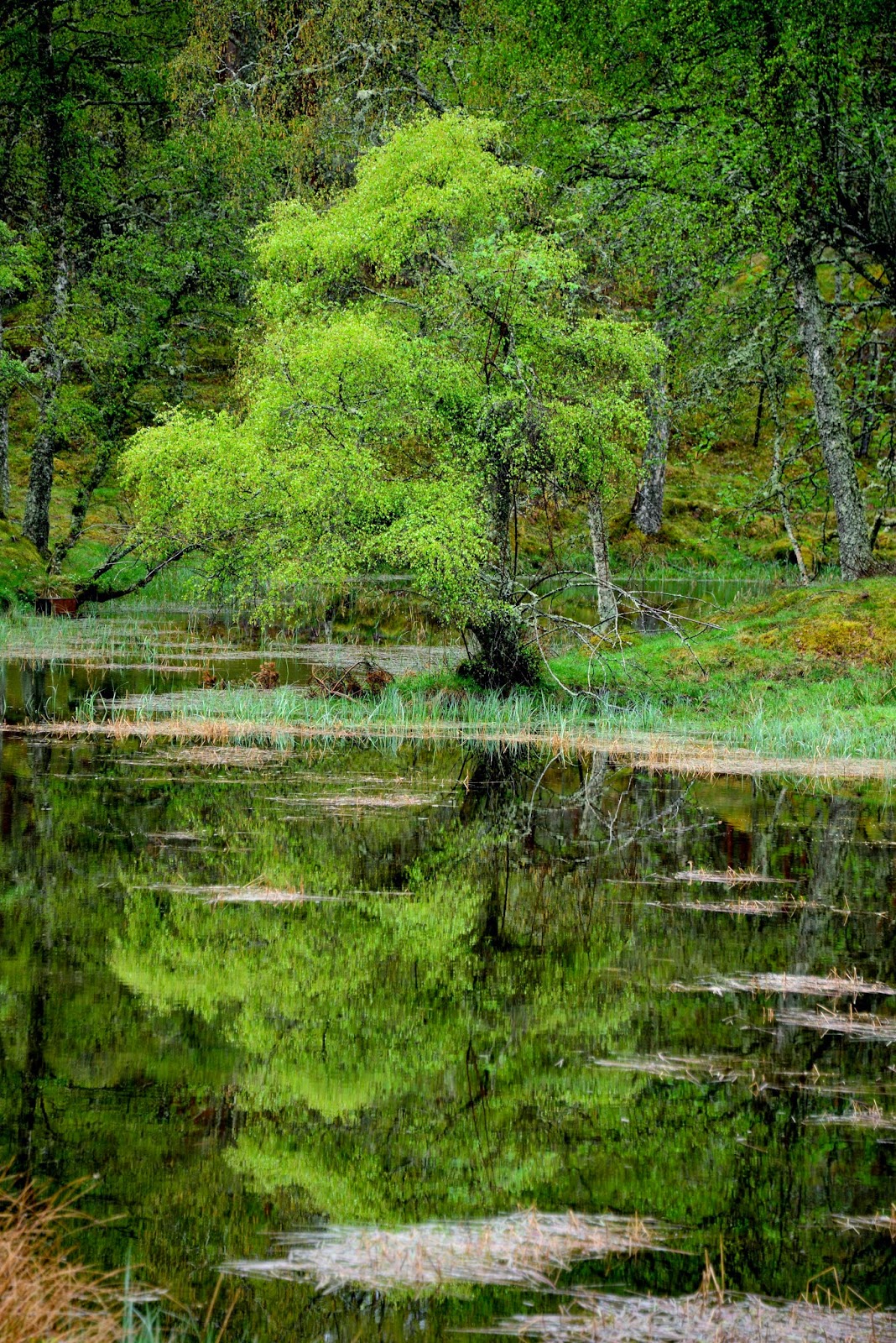 |
| Besides the rough, deer are a hazard at Lochranza Golf Course. |
Golfers’ Serenity Prayer (from the Rough)
Lord give me grace to visualize the shot Tiger would make from this rough;
Give me the knowledge of my own game to recognize the shot I can make;
and Lord grant me the wisdom not to try Tiger’s shot anyway.
 |
| Anne tees off on the 4th at Shiskine GC on the Isle of Arran. |
The Golf Round of the Flies
Anne and I played Auchterarder Golf Course on Monday.
The course is right next to Gleneagles PGA Course where they will play the Ryder Cup matches in September. The course is challenging yet fair--a good walk. This round, though, came with a new challenge. The bunkers were still there waiting to grab wayward shots, the trees which line most holes were flush with new growth, and the rough was sticky and difficult to hit out from. But an additional challenge was presented by the hordes of Dagger or Dance Flies gathered around the greens and tees. These flies are called Dagger Flies because of their long proboscis used to spear prey, and although not a danger to golfers, this crop of flies was particularly bothersome.
 |
| Dagger Flies mating on the green at Auchterarder GC. |
They are agile fliers, with a sophisticated internal gyroscope, and in still air hover and twist about. They are so numerous during the few weeks of this stage that it becomes almost impossible to avoid walking into them as they float. When the wind blows they smash into you as you walk or set up your shot. Down the inside of my glasses, in my nose, in my ears, down my shirt wind-driven flies get into everything. Mouth-breathers like Anne are particularly at risk of sucking in one or two with a breath. Our round was good and Anne won our match as usual, but we will always remember this visit to Auchterarder Golf Course as the Round of the Flies.
The Stones of Machrie Moor
 |
| On the path to Machrie Moor. |
It is a three mile (round trip) walk from the main Isle of Arran road to Machrie Moor and a series of Neolithic and Early Bronze Age relics. The walk up to moor is on a farm track through several fields of sheep.
This spring the fields were full of ewes and lambs, with the curious lambs playing and almost flirting--always under the watchful eyes of mother--with the walkers traipsing up to see the stones.
 |
| The farm track to Machrie Moor. |
The first set of stones near the path is called the Moss Farm Road burial cairn which marks the final resting place of an ancient tribal leader.
 |
| Moss Farm burial cairn. |
The cairn itself was about 20 meters in diameter and fragments of pottery and tools have been found buried within.
The next sight is not so ancient.
 |
| Moss Farm with Machrie Moor site #3 in background left. |
The ruins of Moss Farm attract less attention from visitors than does the stone circle across from it. Besides being a play area for gamboling lambs, the farm ruins at about 200 years old stand in stark contrast to ancient people’s stone work still standing as much as 4000 years later.
This circle is called Suide Choir Fhionn (in Scottish Gaelic) or Fingal’s Cauldron Seat. It is a double ring of stones.
 |
| Fingal's Cauldron Seat. |
But now we have arrived at the moor itself--a broad plain that has been inhabited for the last 8000 years or so. On the plain are numerous hut circles, cairns, stone circles, and solitary standing stones, but five sites are easily accessed and most prominent.
 |
| Machrie Moor site #3. |
The main attractions are site #3, a large seemingly solitary stone, which is actually a part of a large circle, the other stones of which have either been buried or removed.
 |
| Machrie Moor site #2. |
The other major site is circle #2 with three large stones (as tall as 18-1/2 feet) and numerous smaller stones. This circle is very much like the Stenness stones we visited several years ago on the Orkney Islands off the north coast of Scotland.
All the stones of Machrie Moor have been dated to between 1800 and 1600 BC, even though evidence has been found of human occupancy much earlier. The purpose of these ancient structures can only be guessed at. Theories suggest that they may have served some astronomical purposes because of their alignments; it is likely that some served as ritualistic burial sites because of what has been found nearby; but most certainly these stones served some ritualistic purpose for the people who built them. For those of us who visit now, 4000 years later, we question, ponder, marvel, and even gambol with the innocence of the lambs as we view the mysterious Stones of Machrie Moor.
Scenic Scotland:
 |
| Lochranza Castle, Isle of Arran. |
 |
| The small Sannox Harbour, Isle of Arran. |
 |
| Bluebell field at Brodick Castle, Isle of Arran. |











































